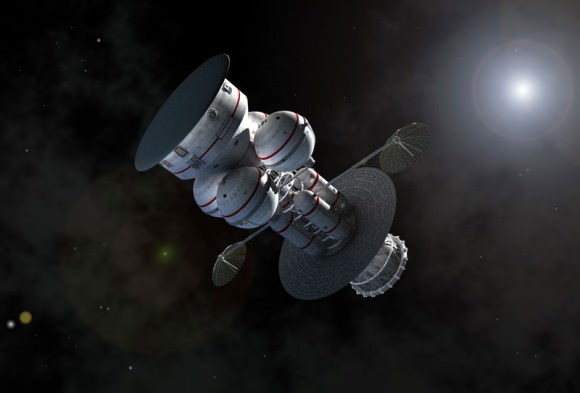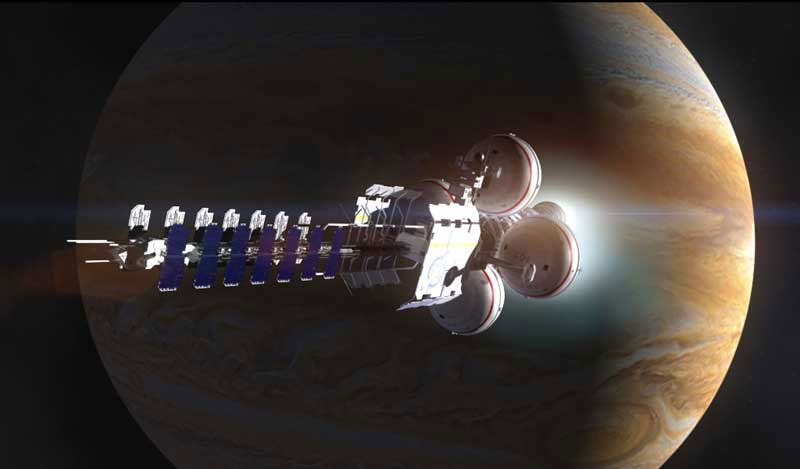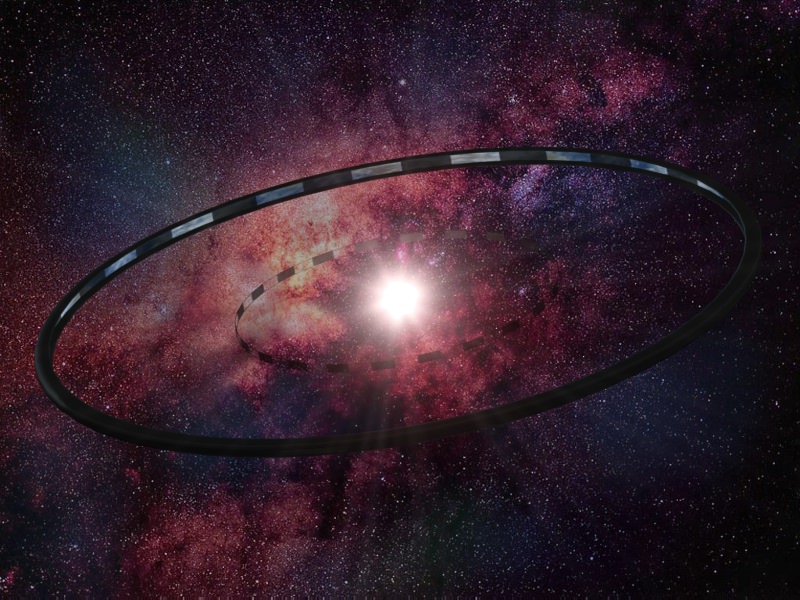Picture the scene: It’s the not too distant future and humanity has started to construct colonies and habitats all across our solar system. We’re gearing up to take that next big step into the unknown – actually leaving the cozy protection of the Sun’s heliosphere and venturing into interstellar space. Before this future can happen, however, there’s an important thing which is often overlooked in discussions on this subject.
Navigation.
Just as sailors once used the stars to navigate the sea, space travelers may be able to use the stars to navigate the solar system. Except that this time, the stars we’d use will be dead ones. A specific class of neutron stars known as pulsars, defined by the repeated pulses of radiation they emit. The trick, according to a recent paper, may be to use pulsars as a form of interplanetary – and possibly even interstellar – GPS.
Theories and ideas on spacecraft engines are plentiful. Foundations such as Icarus Interstellar keenly advocate the development of new propulsion systems, with some systems such as the VASIMR thrusters appearing rather promising. Meanwhile, fusion rockets are expected to be able to take passengers on a round trip from Earth to Mars in just 30 days, and researchers elsewhere are working on real life warp drives, not unlike the ones we all know and love from the movies.
Interplanetary GPS

But navigation is just as important. After all, space is mind-meltingly vast and mostly empty. The prospect of getting lost out in the emptiness is, frankly, terrifying.
To date, this hasn’t really been a problem, particularly seeing as we’ve only sent a small handful of craft past Mars. As a result, we currently use a messy mishmash of techniques to keep track of spacecraft from here on Earth – essentially tracking them with telescopes while relying heavily on their planned trajectory. This is also only as accurate as our instruments here on Earth are, meaning that as a craft gets more distant, our idea of where exactly it is becomes increasingly less accurate.
This is all well and good when we only have a few craft to track, but when space travel becomes more easily attainable and human passengers are involved, routing everything through Earth will start to become more and more difficult. This is particularly the case if we’re planning on leaving the confines of our home star – Voyager 2 is presently over 14 light hours away, meaning that Earth-based transmissions take over half a day to reach it.
Navigating Earth with modern technology is quite simple thanks to the array of GPS satellites we have in orbit around our world. Those satellites are constantly transitting signals which are, in turn, received by the GPS unit you may have on your car dashboard or in your pocket. As with all other electromagnetic transmissions, those signals travel at the speed of light, giving a slight delay between when they were transmitted and when they’re received. By using the signals from 4 or more satellites and timing those delays, a GPS unit can pinpoint your location on the surface of Earth with remarkable accuracy.

The pulsar navigation system proposed by Werner Becker, Mike Bernhardt, and Axel Jessner at the Max Planck Institute, works in a very similar way, using the pulses emitted by pulsars. By knowing the initial position and velocity of your spacecraft, recording those pulses, and treating the Sun as a fixed reference point, you can calculate your exact location inside the solar system.
Considering the Sun to be fixed this way is technically referred to as an inertial reference frame, and if you compensate for the motion of the Sun through our galaxy, the system still works perfectly well when leaving the Solar system! All you need is to keep track of a minimum of 3 pulsars (ideally 10, for the most accurate results), and you can pinpoint your location with surprising accuracy!
Interestingly enough, the idea of using pulsars as navigation beacons dates all the way back to 1974, notably not long after Carl Sagan had used pulsars to show Earth’s location on the plaques attached to the Pioneer 10 and 11 space probes. If Project Daedalus had ever been constructed, it might have been equipped with a system not unlike the one described here.
Packing for long haul
Becker and his colleagues looked at the different types of pulsar visible in the sky, and picked out a type known as rotation-powered pulsars as the best type to use for a galactic positioning system. In particular, a sub-type of these known as millisecond pulsars are ideal. Being older than most pulsars they have weak magnetic fields, meaning they take a long time to slow down their spin rates – helpful as strongly magnetised pulsars can sometimes change their rotation speed without warning.

With countless pulsars to choose from, the question turns to how you might equip your spacecraft to track them. Pulsars are easiest to spot in either x-rays or radio waves, so there’s a little choice as to which may be better to use. Essentially, it all turns out to be a question of how large your spacecraft is.
Smaller vehicles, more akin to modern spacecraft, would be best off using x-rays to track pulsars. X-ray mirrors, like the ones used in certain orbiting space telescopes are compact and lightweight, meaning that a few could be added for a navigation system without increasing the overall mass of the craft all that much. They may have the minor disadvantage that they may be easily damaged by an x-ray source which is too bright, this wouldn’t be a problem except under some unfortunate circumstances.
On the other hand, if you’re piloting a large space ship between planets or even stars, you would likely be better using radio waves. In radio frequencies, we know a lot more about the way in which pulsars work, as well as being able to measure them with a higher degree of accuracy. The only drawback there is that the radio telescopes you’d need to install on your ship would require an area of at least 150 m². But then, if you happened to be flying a starship, that kind of size probably wouldn’t make much difference.
It’s interesting to bear in mind the way that astronomers frequently use the analogy of pulsars being “like lighthouses” when explaining why they appear to pulse. If we someday find ourselves using them as actual navigation aids, that analogy may take on a whole new meaning!
You can read the team’s paper here.

Images are used here with kind permission from Adrian Mann of Icarus Interstellar, whose full gallery is viewable online at bisbos.com


